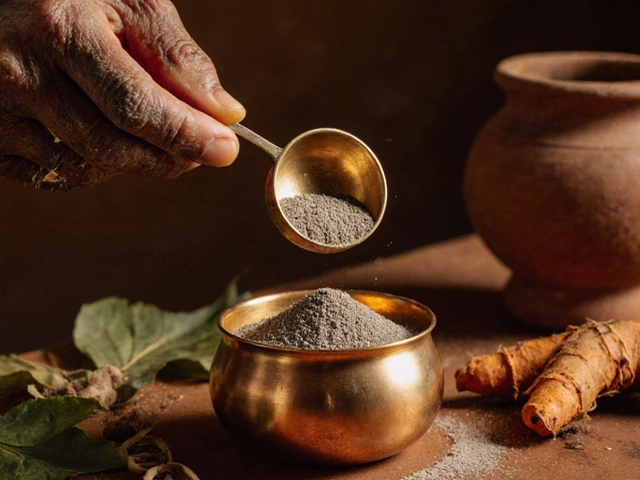Discover the top 10 Ayurvedic medicines, their key benefits, typical doses, safety tips, and where to buy authentic, high‑quality herbal supplements.
Read MoreHerbal Remedies: Natural Healing Options & What to Watch For
When working with Herbal Remedies, plant‑based preparations used to support health, manage symptoms, or treat conditions. Also known as herbal medicine, it bridges traditional knowledge and modern wellness.
These remedies herbal remedies encompass Ayurveda, the ancient Indian system that classifies herbs by dosha and recommends personalized blends, rely on Anxiety‑Inducing Herbs, plants like yohimbe and excessive ginseng that can trigger nervous system overactivity, and include Weight‑Loss Herbs, such as garcinia cambogia and triphala that may boost metabolism. They also feature Anti‑Inflammatory Herbs, like turmeric and boswellia that help calm chronic pain. In short, herbal remedies involve a network of plants, each with distinct actions, and successful use requires an understanding of these inter‑relationships.
Safety is the first rule. Not every natural product is harmless; dosage, preparation method, and individual health status shape the outcome. Research shows that high doses of certain herbs can interact with prescription drugs, alter blood clotting, or affect liver enzymes. Before adding any herb to your routine, check for contraindications—especially if you’re on anticoagulants, thyroid medication, or antidepressants. Quality matters too: look for certifications, third‑party testing, and clear labeling of active compounds. These steps reduce the risk of side effects and ensure you reap the intended benefits.
What can you actually achieve with herbs? For anxiety, calming blends that avoid stimulants—like ashwagandha, lemon balm, and passionflower—have shown modest reductions in stress markers. When it comes to weight management, herbs that support satiety or modestly increase thermogenesis can complement a balanced diet, but they won’t replace calorie control. Anti‑inflammatory herbs such as turmeric, ginger, and willow bark can lessen joint discomfort and may lower markers like CRP. Each of these categories illustrates how specific plant compounds target distinct physiological pathways.
Choosing the right herb starts with a clear goal, a reputable source, and a realistic expectation. Begin by identifying the health issue you want to address, then read up on the herb’s active constituents and recommended dosage range. Verify the supplier’s manufacturing practices—look for GMP compliance or Ayurvedic pharmacopeia standards. Start with the lowest effective dose and monitor how you feel for at least two weeks before adjusting. Keeping a simple journal of dosage, timing, and any reactions helps you fine‑tune the regimen and share accurate information with your healthcare provider.
Key Considerations When Using Herbal Remedies
Regulation of herbal products varies by country; in India, the Ministry of AYUSH oversees Ayurvedic formulations, while many supplements fall under general food‑supplement laws. This means label claims might not be rigorously vetted. To navigate this landscape, consult a qualified practitioner—an Ayurvedic doctor, a naturopath, or a pharmacist familiar with herbal interactions. They can advise on safe combinations, especially if you’re already on medication. Remember, herbs are biologically active agents; treating them as “just food” can lead to missed warning signs.
Below you’ll find a curated list of articles that dive deeper into each of these topics— from detailed herb safety checklists to specific guides on anxiety‑inducing plants, weight‑loss blends, and anti‑inflammatory formulas. Explore the collection to equip yourself with evidence‑based knowledge before you start any new herbal routine.





